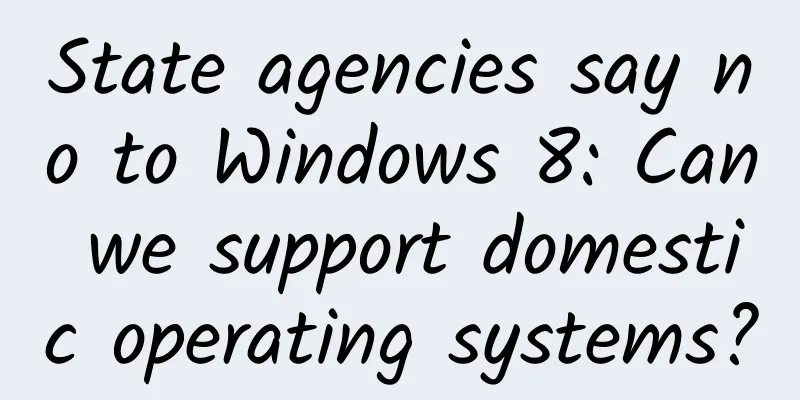Motorola Reflection: Ruined by Cultural Change

|
Ted C. Fishman, editor of Chicago Magazine, recently wrote an article detailing the history of Motorola , saying that cultural changes almost ruined the company that once dominated the communications industry. The article talked about the world's first mobile phone created by Martin Cooper, the history of Motorola being surpassed by Nokia after a glorious period in the mobile phone market , the company indirectly teaching Apple how to make smartphones , and the story of the first generation of Droid phones making a choice between Windows Mobile and Android . The following is the main content of the article: On a warm April day, a small crowd of business people, politicians and journalists gathered on the 18th floor of the Merchandise Mart. They were there to tour the new offices of Motorola Mobility, a mobile phone maker that was spun off from the then-troubled communications company Motorola (now Motorola Solutions) in January 2011 and bought by tech giant Google seven months later. A silver-haired man in a black shirt walked onto the stage. Rick Osterloh is the president and COO of Motorola Mobility, the fourth person to lead the company since the spinoff. He then led visitors around the 14-acre site, showing them images and products from Motorola's long history - the world's first car radio, the first mobile phone, the first device to bring back recordings from the moon... Osterloh also gave a short speech, expressing his optimism about the future of Motorola Mobility and Chicago. He said the company's growth rate would make any startup envious: "Motorola Mobility shipped 6.5 million devices in the first quarter of this year, a year-on-year increase of 61%." But he didn’t mention that those devices account for just 2% of the global smartphone market; that the company lost $198 million in the first quarter of 2014; and that it has lost more than $1 billion since becoming part of Google, even as it has laid off about 17,000 employees. Osterloh then turned the stage over to Chicago Mayor Rahm Emanuel, who helped convince Google to move the company from suburban Liberty-Villiers to downtown. "Motorola Mobility will be a significant economic engine," Emanuel said, "bringing 2,000 jobs to the city." No one talked about the elephant in the room. Three months ago, less than two years after Google completed its acquisition of Motorola Mobility, Google CEO Larry Page agreed to sell the company to Lenovo for $2.9 billion. (The deal, which is under regulatory review, is expected to close this fall.) As for those 2,000 Chicago jobs? Lenovo CEO Yang Yuanqing will be able to do whatever he wants with them. The future of Osterloh and his Google-tinged team is far from certain. Surrounded by tech upstarts, split in two by a fearsome corporate raider, and eventually bought by a Chinese company: Such a fate would have been unthinkable 20 years ago. Motorola was once one of America’s greatest companies, with a history of innovation that consistently spawned new businesses and, in turn, vast fortunes. Motorola had the foresight to invest in China earlier than most multinationals. It even invented Six Sigma, a rigorous quality-improvement process that executives at major companies have adopted to change the way businesses operate in almost every region of the world. Yet, as the history of many giant companies (Lehman Brothers, General Electric) shows, great success often leads to great problems. Interviews with key people in Motorola’s history show that the company’s problems began when management abandoned a decades-old strong corporate culture and when healthy internal competition turned into destructive infighting. “I loved most of my time at that company,” said Mike DiNanno, who worked at Motorola from 1984 to 2003 and led several divisions. “But I hated the last few years.” Company Founding Motorola was founded as the Galvin Manufacturing Corporation in 1928 by 33-year-old Illinois native Paul Galvin. Two years later, the company had its first major technological breakthrough: figuring out how to eliminate static interference from under the hood, commercializing the world’s first mass-market car radio. Paul and his brother Joe created an atmosphere that drove people to invent, learn from failure, and invent again. Motorola is known for its risk-taking culture, investment in training and research and development, and emphasis on mutual respect among employees. Motorola's early years of continuous innovation could have created a wide range of consumer electronics products, such as home radios and televisions. But Motorola's revenue came primarily from technology and equipment for the corporate market, especially for companies responsible for public safety and defense. The two-way radio used by police, the walkie-talkie carried by soldiers in World War II, the microwave radio system used for civil defense communications - Motorola invented them all under Paul Galvin's leadership. Martin Cooper, the electrical engineer who led the company's development of the first cell phone, says the public safety business is "really our core business." Working at Motorola is more than a job; it's a mission. After going public, Motorola still felt like a family business. In 1956, Paul decided to step down and let his 34-year-old son Robert take over. The father built the business domestically, while the son sought international expansion. Bob Galvin is considered one of the greatest American industrialists of the 20th century. From 1959 to 1990 (the year he stepped down as chairman), Motorola's annual revenue soared from $290 million to nearly $11 billion, making it one of the 50 largest companies in the United States. Promote internal competition Bob Galvin and his successors were convinced that competition led to excellence. Chris Galvin explained that, since Motorola had little external competition at the time, “we had to foster competition internally.” For example, leadership consistently encouraged competition among divisions by rewarding the best performers. This internal competition allowed two complementary businesses to flourish during Bob Galvin's time and beyond: Motorola's communications unit built networks, radios and cell phones for government agencies and corporate customers, while its semiconductor unit supplied chips to the communications sector and companies such as Apple. Having been unable to enter the Japanese market for a long time, Bob began to look to China, predicting that the market would eventually surpass Japan. So when China was carrying out market reforms, he began to take action. Chinese officials eventually agreed to let Motorola set up a factory in the country, on the condition that Motorola teach its Chinese employees and suppliers how to make good products for customers in various countries. Bob knew that China would eventually copy the company's technology and compete with Motorola, but he also felt that the Chinese market was huge and attractive, and it was worth investing in even if he sacrificed a small part of the pie. So Bob insisted that Motorola bring its best technology to China, and that the company's factories there produce to the strictest standards. Hundreds of Chinese suppliers, including state-owned companies, learned how to operate the Motorola way. Those suppliers spread what they learned far and wide. Motorola also helped China build its first national communications network, using technology more advanced than that used in the United States. All in all, Motorola helped China become a major industrial center, making a greater contribution than any other multinational company. No wonder Bob Galvin is almost like a god in the eyes of many Motorola people. Inventing the mobile phone Of all Motorola’s inventions, the most revolutionary is undoubtedly the cell phone. The impetus for the company to invent the cell phone came from a request by Orlando Wilson, Chicago’s police chief from 1960 to 1967. The city was plagued by violent crime at the time. Wilson wanted to get his officers out on the streets, but he also wanted them to be able to stay connected while on the streets. Cooper and others came up with a solution: a mobile phone based on a wireless cellular network. Bob Galvin realized that the market for this device could extend to many usage scenarios beyond law enforcement. So he invested $100 million in research and development. In 1973, Cooper made the first call with a boot-sized prototype - to Bell Labs, a competitor of AT&T. The final product, the DynaTAC, wasn’t ready for market until 1984. After that, the cellphone business “exploded,” DiNanno said. “It became a hot industry for the company, the industry, and the country.” However, it also injected a "toxic element" into Motorola's corporate culture. Employees in the public safety department, which was once a leader, watched the mobile phone department take away their bonuses and celebrated. The mobile phone department employees bought luxury cars on the day they received their bonuses. The marketing department of the department also hired male models at a celebration party, painted them green, had them wear big dollar signs, and sang "We're in the Money". The Warring Tribes Era The era of "warring tribes" as Motorola calls it has begun. "The company has no plans to merge network technology and mobile phone technology. The two divisions operate completely independently and go in completely different directions." In the network market, Motorola is an early developer of digital cellular technology. Its digital network patents bring in considerable royalties. But its mobile phone division has been slow to switch from analog phones to digital cellular phones. So Motorola's network engineers were left to their own devices. DiNanno says that in the 1990s, all 1,000 engineers he worked with used digital phones made by Qualcomm, one of Motorola's biggest competitors in the telecom semiconductor industry. "There wasn't a single Motorola phone in the entire building," he marveled, "even though another division of the company had been fighting Qualcomm for years." The company's performance was not affected by this at that time. Thanks to its still growing mobile phone business, Motorola jumped to 23rd place in the Fortune 500 US listed companies in 1994, with revenue of US$22 billion and net profit of nearly US$2 billion. In 1994, Motorola's share of the US mobile phone market was as high as 60%, and the wireless business contributed nearly 65% of the company's revenue. But Motorola was about to fall from grace. Finnish rival Nokia, which had shrewdly switched to digital phones, overtook Motorola as the world's largest mobile phone maker. It also became very competitive in building networks. In 1997, Motorola's board called in Chris Galvin, Bob's son, to lead a turnaround. He knew the company better than anyone: He'd been there for nearly 20 years. He inherited a huge, bureaucratic company—60 different businesses around the world, almost all of them sluggish. He also faced another problem: Iridium. Bob Galvin advocated the use of the Iridium satellite system in the late 1980s to provide the all-encompassing coverage that cellular systems could not. Motorola invested $2.6 billion and a lot of time in a $5 billion consortium to develop the system. However, when Iridium finally produced a product in the late 1990s, its bulky $3,000 phones and $7 per minute calls were too expensive. Iridium finally declared bankruptcy in 1999. Times seemed to be against Chris Galvin. The technology and telecommunications bubble began to burst in 2000, and Motorola's stock price suffered a heavy blow. The 9/11 incident in 2001 and the SARS incident in 2002 disrupted the company's international supply chain, which greatly affected product sales. In 2001 alone, Motorola's revenue dropped by nearly $8 billion to $30 billion; the loss was close to $4 billion. To narrow the losses, Chris cut 56,000 jobs out of nearly 150,000 employees. He also closed some factories. The only bright spot was the public safety division, where orders grew after the 9/11 attacks and profit margins were high. However, Di Nanno said, "In the early 2000s, we were in trouble, and that's well known." Pinning hopes on Razr Chris pinned his hopes on developing and marketing a great digital phone. The Razr was thin, almost entirely made of metal, foldable, and luxurious. But before the product was officially launched, he was fired by the board. Three months after Chris left Motorola, the company's performance began to rebound strongly. Razr was a hit, with sales reaching 50 million units in its first two years on the market. By the end of 2004, Motorola's market value reached 42 billion US dollars. The person who replaced Chris was Ed Zander. After taking office, the former chief operating officer of Sun Microsystems joked at a leadership seminar in Silicon Valley that the Motorola he took over was too slow and blind to the coming convergence of telecommunications technology, which made him cry on his first day at work. As the Razr became a hit, he quickly gained ground. Motorola's performance began to improve. In the first two years of Sundar's tenure, Motorola's stock price doubled. The new CEO wanted to prolong the momentum of the Razr as long as possible, launching a variety of models with different colors and shapes and slightly different functions. Sundar said that several large mobile operators wanted the company to do this. Partnering with Apple At the same time, he made one of the worst decisions ever made by a big-business CEO: he struck a partnership with his Silicon Valley friend, Apple CEO Steve Jobs. Motorola and Apple teamed up to launch a Motorola iTunes phone, the first phone to connect to the Apple Music Store. "We couldn't have thought of a more natural partnership than this one with Apple," Sandel said at the time. The product, called Rokr, launched in the fall of 2005. Jobs, who unveiled it, called it "the iPod Shuffle for your phone." Sandel said he believed at the time that Motorola could become cool again by working with Apple. However, just as it taught the Chinese to compete with it many years ago, Motorola was teaching one of the most creative, competitive and consumer-savvy companies in history how to make a mobile phone. Two years later, when Jobs launched the original iPhone, Motorola was still pushing the Razr, trying to boost sales by making it more accessible to the masses. The result: falling profit margins. One analyst estimated that the company was making an average of $5 per device. Motorola's innovation machine stalled amid mass layoffs: Analyst Joan Lappin notes that the company, which had long been among the top 10 U.S. companies in terms of U.S. patents, had plummeted to No. 34 in 2006. Zander insists that he saw the assault on the smartphone market coming, but that Motorola didn't have the DNA or the people to understand the software involved. He also blames a supplier for being slow to act, causing the company to lose nearly a year in a product cycle. "We should have terminated the contract with that carrier," he says. "Unfortunately, I should have stepped down as CEO and run the phone division myself." Another mistake he made: He never participated in the operation of the Chinese business like the Galvin family did, leaving the details of the operation to his department heads and regional managers. When China upgraded its mobile network to 3G, his managers slashed the prices of its 2G phones in order to retain market share. The CEO was completely unaware of all this. The collapse of the Chinese business in 2007 shocked Sandel. That year, Samsung's mobile phone sales exceeded Motorola's for the first time, and Motorola has never recovered since then. Icahn Invasion Sandel's poor performance pushed Motorola into the situation that many once-glorious American companies have encountered: Wall Street invaded. In this case, Motorola was invaded by Carl Icahn, who was once called "the world's most astute investor" by Fortune. "Sander is a good guy, but he's doing a terrible job," Icahn said. "Unfortunately, the company is going downhill very quickly." The activist investor believed that Motorola's mobile phone business was a very difficult business, and he also believed that the public safety business was greatly undervalued. So Icahn began buying Motorola shares in 2007. Eventually, he held more than 6% of the company's shares and successfully won a board seat. His goal: to convince the board to split the company to maximize shareholder value. Planned Spin-off He succeeded. In 2008, Motorola began planning to separate its mobile phone division from its public safety and enterprise divisions. Of course, Zander was kicked out. The reorganized board named Greg Brown, who had run the latter business since 2003, as the new CEO. Brown, who previously led software company Micromuse, has extensive operational experience at a profitable business with consistently high margins, and he also has one quality that is extremely important to Icahn: the ability to see the potential that he sees. But finding someone qualified to lead the troubled mobile phone business was not easy. "There were only a few people in the world who could do that job," Icahn said. "They all turned it down because they wouldn't accept anything other than CEO, and Motorola already had a CEO." Icahn reasoned that the mobile business would be spun off soon anyway. So he eventually suggested that the board hire a co-CEO. Brown agreed to the arrangement. Sanjay Jha, the former Qualcomm COO, accepted the position. His total compensation in his first three years on the job reached nearly $60 million. "The board needed him," Icahn explained. Jha walked into a marketing department that seemed completely out of touch with the market. "On my second day at Motorola in August 2008," Jha said, "I looked at the company's mobile phone portfolio. After studying it thoroughly for three hours, I was shocked. There were no smartphones in the company." Then he called a meeting with his engineering team to learn about their product plans. "I was told that Motorola actually developed and patented a lot of technologies that weren't used in its phones," he said. "The company pioneered the QWERTY keyboard, color screens, 3G networks, and touch technology." But few Motorola phones had those features. Jha decided the only way to stop the massive losses was to cut operating costs and phone models. At Motorola, 60 managers were responsible for dozens of different models. In contrast, Apple was focusing all its efforts on perfecting one phone. Jha came up with a way to save the business: build a successful phone for Verizon, which was struggling to compete with AT&T, the exclusive distributor of the iPhone at the time. Windows Mobile or Android? Jha had to decide which operating system to bet on. Motorola's five home-grown systems all failed; none of them could compare to the iPhone's operating system. Jha said Microsoft's then-CEO Steve Ballmer wanted him to choose Windows Mobile. "Ballmer told me ... I should put 400 engineers to work on Windows Mobile phones," he said. "I told him that Microsoft's success was not my priority. I needed to survive first, and we were so under-resourced that we couldn't allocate even one engineer." The timeline was tight. Engineers told Jha they wouldn't be able to finish the new phone before the spring of 2010. Verizon wanted Motorola to deliver the phone by October 2009. Meanwhile, his division was losing about $600 million a quarter. Jha laid off 4,000 employees, further draining Motorola's engineering talent pool. Star executive Iqbal Arshad was also leaving. He was bitter about the closure of his European lab and the layoffs of his team. Jha later persuaded him to reconsider. During one of his presentations on an airplane to Jha and executives in Schaumburg, Germany, Arshad said the project, code-named Mission Impossible, was to build a phone that would run Google’s new Android operating system. If it worked, it would be the second Android phone on the market. A top Motorola executive said it was crazy to choose Android over Windows Mobile, arguing that Google's system was not yet perfect, while Microsoft was already one of the most powerful software companies in the world. Jha was unmoved. Motorola's board of directors faced two choices: either accept Ershad's suggestion or shut down the mobile phone business altogether. In the end, the board of directors voted 4 to 3 to choose the former. Arshad then selected 200 engineers from within the company to work closely with the Google team led by Andy Rubin, the "father of Android." "They want Motorola to succeed and prove everyone wrong," Arshad said. "They want to save the company." They did. The new phone, called the Droid, hit the market in October 2009. Jha said that in its first few months on the market, the Droid outsold the Apple iPhone. By the end of 2010, after four years of huge losses, Motorola's mobile phone division was profitable again. For longtime Motorola employees, however, the success was bittersweet. The Droid wasn't the kind of world-changing innovation the company was known for. Motorola had come to accept that the most important innovations in cell phones came from better imitations rather than pure inventions. Moreover, Motorola taught the world how to make a great Android phone. Before long, its old rivals once again outperformed it, especially Samsung. By the time Motorola was spun off in January 2011—nearly three years after Icahn’s move and much later than the board had expected—the phone division was once again posting huge losses. Google Acquisition Google began looking to acquire Motorola Mobility (the phone company) just months after it separated from Motorola Solutions (the public safety and enterprise company). Sure, the phone-making process was a big draw; Google was getting into the hardware business. But Google was more interested in acquiring Motorola Mobility's 17,000 patents—most of which were acquired during a period of aggressive innovation. That intellectual property would give Google a jumpstart on its defenses against patent lawsuits. For Icahn, Brown, Jha, and Motorola Mobility shareholders, the deal proved that the spinoff was a wise choice. It also brought a rich financial return. Google offered $40 per share, a 63% premium to Motorola Mobility's stock price, for a total of $12.5 billion. Google completed the acquisition in May 2012, announcing that "we plan to operate Motorola independently." Jha left soon after, and Google CEO Page replaced him with Dennis Woodside, Google's former head of sales and operations for the Americas. Woodside brought in a number of executives, many of whom were from Silicon Valley. They decided to close one-third of Motorola Mobility's remaining offices and conduct another round of large-scale layoffs. After laying off more than 17,000 employees, the company's global workforce was only 3,600. Moto X falls short of expectations New chief software engineer Steve Horowitz believes that most Android phones are too customized: almost every mobile phone manufacturer and operator customizes the operating system, provides its own interface, and pre-installs its own applications. "I don't like this," Horowitz said. "I know Android and the development team behind it very well. They do a great job. I want to go back to the basics and use the original Android." The first phone from Motorola Mobility under Google, the Moto X, was released in August 2013. It won unanimous praise from reviewers and had many outstanding features, such as a beautiful design and an OS without unnecessary proprietary services and apps. It can also be controlled by voice without touching it - a major innovation. Its sensors can automatically detect whether you are driving, and if so, it will automatically switch to touch-free control mode. However, initial sales of the Moto X did not meet the company's expectations. As a result, it cut the price by about 25%. The product is now priced at $299, $300 less than Samsung's flagship phone. You can also choose the two entry-level phones that Motorola Mobility has launched in the past year: the $179 Moto G and the $129 Moto E. They are selling well in markets such as India and Brazil. But Osterloh said the company must further reduce prices, which will inevitably put pressure on profit margins. You know, Google's Motorola Mobility division is still in a loss-making state: it lost $68 million in the last quarter. Lenovo Those losses no doubt played a role in Page's decision to sell Motorola Mobility to Lenovo for $2.9 billion, less than a quarter of what Google paid for the company 20 months earlier. The deal will give Lenovo access to the U.S. market. Lenovo executives said the two companies complement each other. Lenovo's huge economies of scale, as well as Motorola Mobility's brand and market share outside of China, will be combined. Lenovo will also be able to benefit from a series of innovative products that Motorola Mobility is about to launch. It is reported that the new Moto phone and the much-anticipated Android Wear smartwatch Moto 360 are likely to be launched in the coming months. Those products may bring Yang some luck. Given that he has previously boasted that Lenovo will be able to return Motorola Mobility to profitability within 12 to 18 months, he may really need luck. As for whether layoffs will be required to fulfill this prediction, Lenovo executives have been evasive. However, it is hard to imagine Lenovo not laying off employees after completing the deal this fall. After all, history shows that transformation is often accompanied by layoffs. As a winner of Toutiao's Qingyun Plan and Baijiahao's Bai+ Plan, the 2019 Baidu Digital Author of the Year, the Baijiahao's Most Popular Author in the Technology Field, the 2019 Sogou Technology and Culture Author, and the 2021 Baijiahao Quarterly Influential Creator, he has won many awards, including the 2013 Sohu Best Industry Media Person, the 2015 China New Media Entrepreneurship Competition Beijing Third Place, the 2015 Guangmang Experience Award, the 2015 China New Media Entrepreneurship Competition Finals Third Place, and the 2018 Baidu Dynamic Annual Powerful Celebrity. |
<<: Zero profit on hardware: Customized mobile phones enter a new era
>>: Behind the 260 million yuan fine: How did Qvod become a rogue platform?
Recommend
Are personal websites not allowed to post advertisements?
Question: My personal website has traffic but is ...
Why did Sancai disappear after the Tang Dynasty?
As we all know, China's Tang Sancai pottery, ...
These two practices are a waste of smartphones
Smartphones play an increasingly important role in...
Different flavors of dependency injection in Swift
Preface In previous articles, we looked at some d...
Camera2 custom camera development process detailed explanation
[[432612]] Preface Today I will introduce the det...
Looking at the decline of Japan's television industry, can China become the next South Korea?
China has always had an awkward position in the g...
Super complete! All the advertising strategies for 2018 are here!
According to the data from the "2018 China O...
SEO concept, what does SEO ranking optimization mean?
Nowadays, there are many promotion platforms, whi...
New breakthrough! Chinese scientists develop the world's first brain-like complementary vision chip →
In the modern technological arena, "visual p...
Hunter Camp "Xiaohongshu Zero-Based Traffic and Money-Making Course"
The main focus of this course is to explain how t...
WeChat payment mini program, how to connect the mini program to mobile payment?
Q: WeChat payment mini program, how does the mini...
Reading source code like this is not awesome
In the course of their work, programmers will enc...
If you really run your business like freestyle, you will probably be on your knees...
Shopping, eating, shopping, eating... this is the...
The Central Document No. 1 focuses on firmly maintaining two bottom lines! What are the two bottom lines? Details attached!
On the evening of February 22, 2022, the Central ...
Xiaomi Mi A1 releases kernel source code: turns into the little prince of flashing
[[218890]] In 2017, Xiaomi and Google collaborate...









